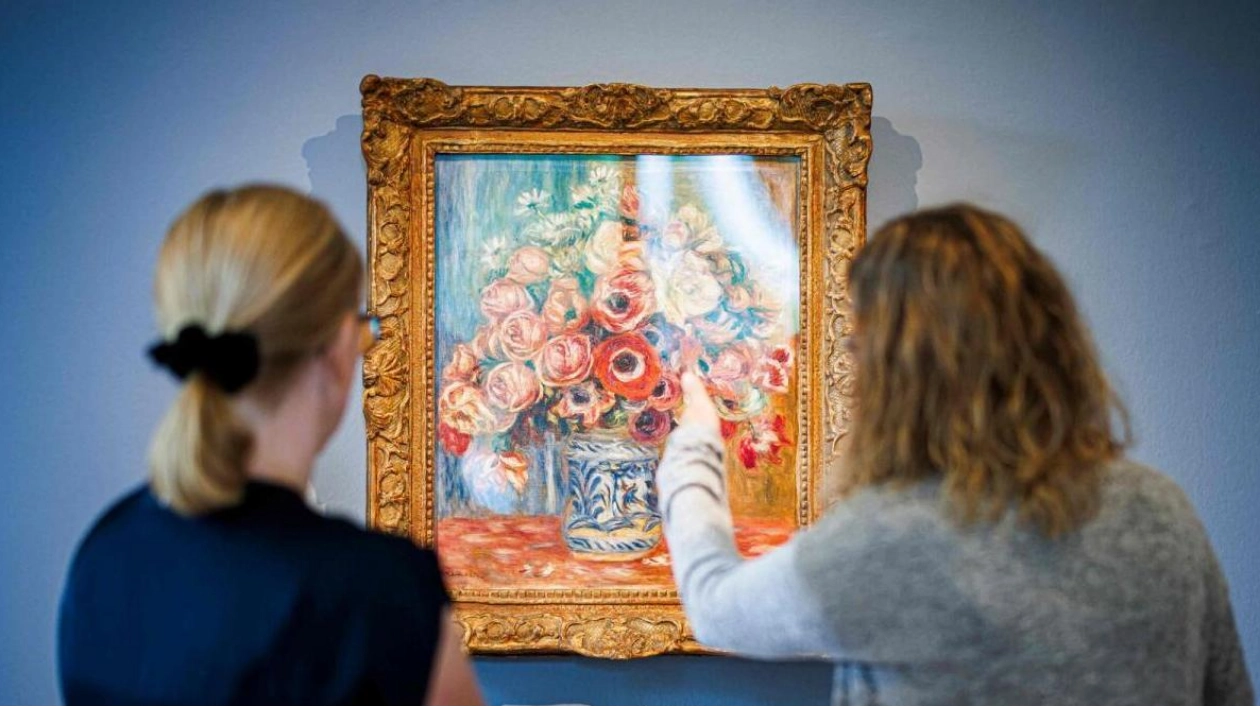The esteemed collection of Impressionist works at the Langmatt Museum is experiencing a fresh perspective, quite literally, after its first loan departure from the northern Swiss museum. Approximately 50 paintings, featuring artists such as Pierre-Auguste Renoir, Paul Cezanne, Claude Monet, and Edgar Degas, are now displayed in a brighter setting at the Hermitage Foundation in Lausanne, as the Langmatt undergoes renovations.
"I've never seen the paintings in this light," remarked Markus Stegmann, the Langmatt's director. Previously, the collection had never ventured beyond the confines of the Langmatt villa in Baden, near Zurich, where the artworks were showcased under the soft glow of crystal chandeliers and latticed windows. At the Hermitage, with its expansive bay windows overlooking the city of Lausanne, the natural light mirrors the conditions that originally inspired the Impressionists.
Highlights of the collection include Renoir's "The Braid" (1886-1887), Monet's "Ice Floes at Twilight" (1893), and Gauguin's "Still Life with Bowl of Fruit and Lemons" (1889-1890). This exhibition, running until November 3, honors both the 150th anniversary of the Impressionist movement and the legacy of Sidney and Jenny Brown, who curated the collection between 1908 and 1919. The Browns, a wealthy family from the industrial bourgeoisie of northern Switzerland, demonstrated remarkable artistic discernment, acquiring works purely on personal preference rather than expert advice, according to Stegmann.
For instance, Eugene Boudin's "Washerwomen on the Bank of the Touques" (1895), purchased during the Browns' honeymoon in Paris in 1896, depicts women by the water's edge with a factory in the background. Sylvie Wuhrmann, director of the Hermitage Foundation, described it as "not an easy work, it's not a loveable work." The Browns' collection also embraced works from the Munich Secession before they focused exclusively on contemporary French artists, particularly favoring Renoir, Cezanne, and Camille Pissarro.
Their dedication to Impressionism was considered daring in societal circles, yet their collection includes iconic pieces like Renoir's "The Boat" (circa 1878) and portraits of his children, with "The Braid" often likened to the Langmatt's Mona Lisa. This piece complements the Hermitage's own collection, which features a significant number of works by Suzanne Valadon, the model in "The Braid."
In 1919, the Browns unexpectedly shifted their tastes, abandoning Impressionism for 18th-century French art. They sold several key pieces, including works by Renoir and Cezanne, to acquire Jean-Honore Fragonard's "Young Girl with a Cat" (circa 1770), now on display in Lausanne. They also commissioned Max Oppenheimer to create a portrait blending Expressionism and Cubism.
Sidney Brown passed away in 1941, and Jenny Brown ceased her art acquisitions, living out her days in seclusion at the Langmatt villa until her death in 1968 at the age of 96. When Markus Stegmann sought a temporary exhibition space during the villa's renovation, the Hermitage eagerly agreed, coinciding with its 40th anniversary. This collaboration facilitated the publication of a detailed catalog of the Langmatt collection, a project the Baden museum could not have undertaken alone.
In November, due to severe financial constraints, the museum auctioned three Cezanne paintings in New York. "Fruits et pot de gingembre" (1890-1893) sold for $38.9 million, "Quatre pommes et un couteau" (circa 1885) for $10.4 million, and "La mer a l'Estaque" (1878-1879) for $3.2 million. Stegmann described the sale as a regrettable but necessary measure to ensure the museum's future. Following its stay in Lausanne, the collection will travel to Cologne, Germany, from March to July 2025, and then to Vienna from September next year to February 2026, before its return to Baden.






